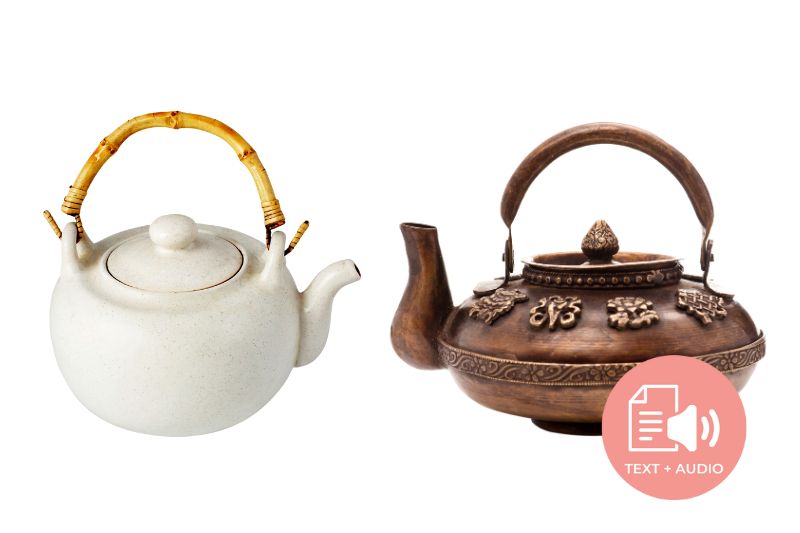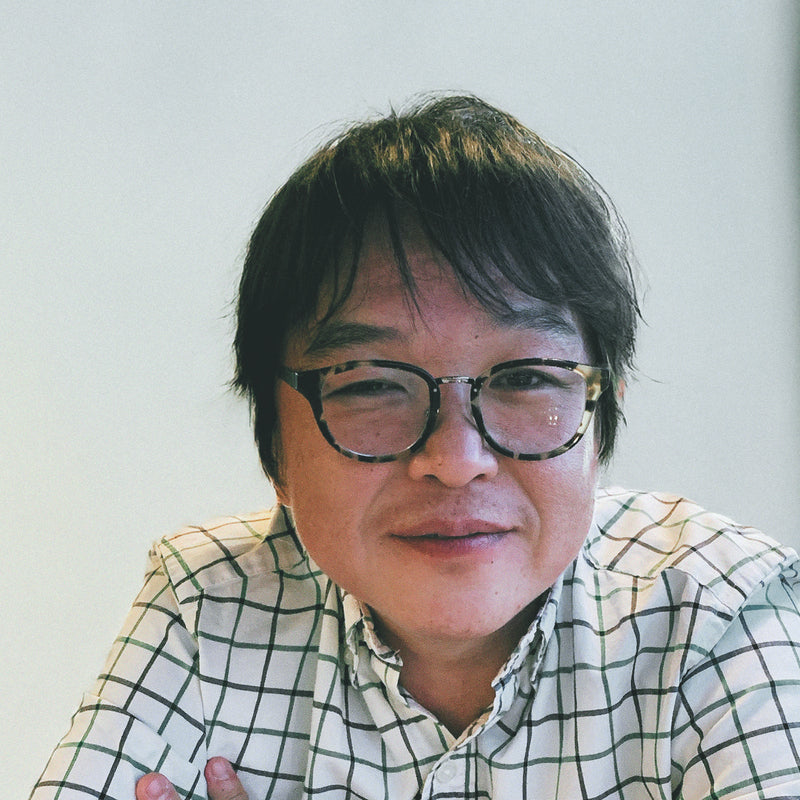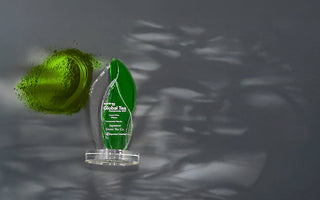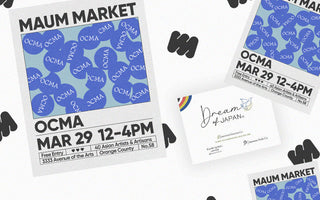A few days ago, I, an avid tea-lover, found myself in the land of espressos, ancient historical sites, mouth-watering cuisine, and spectacular natural beauty. Yes, you may have guessed it already, but to be sure we are on the same page, let me tell you where I have been - Italy, the country nicknamed “Bel Paese” (the beautiful country).
As a tea lover in Italy, I felt a bit like Alice in Wonderland, a bit confused but also thrilled and eager to learn about the local tea culture. To my surprise, I found out that it was not only me that was confused regarding tea in Italy, but that even in Italy, there is a general confusion surrounding the correct spelling of the Italian word for tea - tè, thè, or the! But, jokes aside, studying the tea scene in Italy was quite enjoyable, especially when I compared it to my tea experiences in Japan and the States. So today, without further ado, let me spill the tea on the similarities and differences between Tea in Japan and Tea in Italy!
Cultural and Social Aspects of Tea in Italy
Green tea has immense social, cultural, and historical importance in Japan. Sadō/chadō (the Way of Tea) is a thousand years old cultural art form that is still highly relevant to Japanese everyday life. Japanese tea culture is also deeply rooted in Zen Buddhism and therefore has a spiritual significance in the hearts of Japanese people. In terms of daily social life, when you have a guest over at your house in Japan, the first thing you offer them is tea. People drink tea multiple times a day in many different forms - hot, cold, green, black, with or without milk, etc. Green tea and other forms of Japanese tea also is considered to be (and actually are) a health-friendly drink that people opt for as a healthy alternative to other drinks such as sweet carbonated drinks.
Now, tea does not have much cultural significance in Italy. The main culturally and historically significant drink in Italy is coffee. This spot is dominated so strongly by coffee that it will be almost impossible for tea to share the spot with coffee in Italy. (Keep an eye out for the next post, where you can read about Italian coffee vs. Japanese coffee based on my personal experience in Italy here). In Italy, tea is considered a medicinal beverage, and green tea is viewed as a tool for weight loss.
From my trip to Italy this time, I have tried to look for tea options in the local supermarket and convenience stores. I was flabbergasted by the size of the gigantic coffee section but was quite disappointed by the tiny section for tea. Here is a photo:

Photo of coffee and tea sections at the grocery store
This is a tea section in a regular grocery store, not much of an option (about 1⁄4 of area space compared to coffee) (On a side note, I spotted a Mario on the shelf as well! Did you know that the famous character Mario from the Nintendo video game, “Mario” as well as his twin brother “Luigi” are Italian? The characters were created by the Japanese video game designer Shigeru Miyamoto in 1981 based on their mad landlord who were plumbers.)
In my pursuit of a better tea selection, I have also visited the Italian Eataly store (my absolute favorite chain Italian shop!). Eataly also has stores in the US in New York, Boston, Chicago, Los Angeles, Las Vegas. Here, I have found a better assortment of tea and coffee compared to other stores.
Photos from Eataly Store



Here are some examples of why and how tea might be drunk in Italy:
- Black Tea (tè Nero): In the morning or the afternoon, with a sweet snack such as cake or biscuits. It appears to be common in some of the Northern parts of Italy to have black
Tea with a wedge of lemon in the mornings. Also, in Italian cafes, if you order black Tea (if they have the option to order Tea, that is!), you might be asked, “Con Limone? (with lemon)?” as it is common to have a slice of lemon with your black Tea in Italy.
-
Herbal Tea (Tisane): Herbal Tea is a trend all over Europe that is becoming more popular due to the rise in fitness/health culture. People tend to associate herbal Tea with making a healthier choice than other sweetened and caffeinated beverages. Check out this video I made with ChaCha explaining what is tea and what is non-tea (herbal tea).
-
Green Tea (tè Verde): Green Tea is associated with weight loss, and people consume it for its health benefits rather than to enjoy the taste of green Tea or its cultural importance. However, in recent years, the number of people who are interested in the Japanese tea culture has been increasing, and there are even schools where you can learn about the Japanese tea ceremony, such as Scuola di Cerimonia del Tè Jaku (Jaku School of Tea Ceremony) located in Lucca, a city in Tuscany. This school opened in 2018 and has been offering lessons on Japanese Chanoyu based on the Urasenke school of thought, Chinese Gong Fu Cha, and Darye (Korean Tea Ceremony).
-
Chamomile Tea (Tisana alla camomilla):
Chamomile tea is the most popular herb tea in Italy. It is considered to be highly beneficial for health, improves sleep, and is a natural remedy to common illnesses. Italy also has its own Chamomile tea brand, Bonomelli, which is also exported to other countries.
Another exciting thing about Chamomile tea in Italy is that it is given to babies. If you go to a baby section in any Italian supermarket, you will see they have "chamomile tea for babies." It is said that chamomile tea has a calming effect on babies, even helping with their digestion and colic symptoms. (*It is always better to consult your child's pediatrician before introducing a new food or drink to them)
-
Cold or Iced Tea (Te Freddo)
In Japan, we can find many different kinds of iced tea, including a wide variety of unsweetened tea. In Italy, iced tea is quite commonly found, especially in the hot summer, but it is mainly a sweetened tea with lemon, mint, or peach flavor. A market report has also found that iced tea is Italy's second most popular cold drink after coca cola! Iced tea in Italy is mainly sold in canned or bottled form, and some of the most famous brands are Estathé (made by the big Italian company Ferrero in 1972), BELTÈ (1992), SAN BENEDETTO THÈ (2002), etc.
However, compared to Japan, where you can find a vast range of options for iced-tea even in vending machines, many Italian vending machines do not have tea options.
Here are the photos of a vending machine from my trip to Italy, where you can only see coffee options:




Not many tea options; at this point, I was missing a chilled iced tea from the Japanese vending machines a bit!
How long has tea been in Italy - History of tea in Italy:
During the Renaissance era (15th-16th century), Italy, and in particular, Rome, Venice, and Naples were undergoing a rebirth in terms of culture, art, religion, trade, and business. The Renaissance era marks the transition of the whole of Europe from the Middle Ages to modernity.
During this time, a large volume of information about the Asian world started to reach the Italian Peninsula and was recorded in written form. One of the things that were first recorded among these was the knowledge of 'tea' from Asia.
One of the first recorded accounts of tea happened in Venice (A historical city that was part of my trip to Italy this time.)

An Italian geographer and travel writer, Giovanni Battista Ramusio recorded his conversation with a Persian trader about tea from China in his famous three-volume book, "Voyages and Travels" (1550-1559).
In the book, the Persian trader describes the Chinese tea as follows:
“...over all the country of Cathay(in the old times, China was called Cathay in Europe) they made use of another plant, or rather of its leaves. This is called by those people Chiai Catai [China tea], and grows in the district of Cathay, which is called Cacianfu [Sichuan]. This is commonly used and much esteemed over all those countries. They take of that herb whether dry or fresh, and boil it well in water. One or two cups of this decoction taken on an empty stomach removes fever, head-ache, stomach-ache, pain in the side or in the joints, and it should be taken as hot as you can bear it.”
[(excerpts from Giovanni Battista Ramusio (Italian, 1485-1557 A.D.) Delle Navigationi e Viaggi(Voyages and Travels, 1550-1559), Venice: Tomasso Giunti, 1583]
Another great influx of knowledge and appreciation of the Asian tea culture in Europe happened through correspondence from a group of Catholic missionaries called “Jesuits” that were sent to Japan. These missions started with a Catholic missionary Francis Xavier, who reached Japan on 27 July 1549 on the shores of Kagoshima. The Christian missionaries found themselves deeply moved by the practice and teachings of “Chanoyu” and wrote extensively and highly of the tea masters of Japan in their records.
This is where it gets really interesting - Do you remember the famous Japanese tea master “Sen no Rikyu”? Among Sen no Rikyu’s closest disciples, many were Christian Jesuits, and they held their own tea ceremonies as well! This is a beautiful example of how the teachings of the Japanese green tea ceremony bring people together, providing a platform where people can understand, appreciate, and learn from each other, regardless of their geographical or religious backgrounds.
A notable Italian missionary who visited Japan and practiced and participated in Japanese tea ceremonies in Japan is Alessandro Valignano (1539-1606), who was born in Naples. Valignano promoted and encouraged the use of Chanoyu among his followers, and it was common for him to hold a Chanoyu ceremony when welcoming Japanese lords to his house.
So we can see that Japanese green tea and the Way of Tea have been admired in Italy for a long time.
Around 1610, Dutch traders began to bring large shipments of tea to Amsterdam. From Amsterdam, the tea would be exported to other parts of Europe, like Germany, Italy, and Portugal. However, during these periods, tea was reserved only for those in higher classes of society, and for ordinary people, it was only used as medicine.
During the 18th and 19th centuries, tea shops and tea rooms started to be established in Italy as well. Some notable Italian tea establishments formed during these and are still going strong today are:
Guess what! I have a photo right in front of this historical Tea room from my trip to Italy!

Tea Rooms next to Piazza di Spagna, Spanish Steps where Princes Ann in Roman Holiday meet Joe while she eats Gelato.
This tea room was founded in 1893, by two ladies - one Scottish, and one English. It is not just a tea room, but is a major historical attraction in Rome; the tea room has witnessed and survived two world wars, multiple economic turmoils, and the rise of fast food and arrival of the recent cafe chains. Even after 128 years, it still remains popular among both the locals and the tourists of Rome.
Can tea be grown in Italy? Are there tea plantations in Italy?
Japan ranks 8th in the world in domestic tea production, and we have all heard about the famous Japanese tea-growing regions of Kagoshima, Shizuoka, and Uji, all boasting many tea plantations that produce extremely high-grade tea.
Italy is known for growing agricultural products that are famous all over the world for their superior taste and quality - Tomatoes, Olives, Durum Wheat, Lemons, and of course, Wine (grapes)! But how about tea? In Italy, tea production is still small, but it is not non-existent. There are only a very few tea plantations, and some of them are still in their experimental stage.
Although Italian tea production has a long way to go in terms of growth, it has great potential in terms of climate and natural abundance. For example, parts of Northern Italy can provide tea plantations with a high elevation thanks to the Alps. In fact, in 2019, an Italian black tea called ‘Verbano black tea’ grown at the foot of the Alps, won the Gold Award in “the 2019 International Black Tea Tasting Competition” held in China.
Below we are going to introduce some of these excellent tea plantations from Italy:
1. COMPAGNIA DEL LAGO MAGGIORE TEA PLANTATION
This agricultural company grows tea plants in a village called Verbania (Piemonte region). This is a region of Italy bordering France and Switzerland at the foot of the alps. The owner Paolo Zacchera traveled through the tea regions of the world, such as Japan, Turkey, and China, learning as much as he could about how to grow and cultivate the best kind of tea. His plantation has about 50,000 tea plants at the moment. Here is a video of Paolo Zacchera talking about his tea plantation with the Alps in the background: https://www.youtube.com/watch?v=MpgndYE1J0w
2. Premosello Chiovenda tea plantation in Val Grande National Park
This plantation is a collaboration between an Italian tea company called La Via del Te and a renowned Italian plant grower called La Compagnia del Lago Maggiore. The plantation is located in a region called Val d’Ossola (Ossola Valley), situated North of the magnificent Lake Maggiore. The plantation started in 2017, and currently, the plantation has around 20,000 Camellia Sinensis plants. The seeds that have been used to start the plantation were collected from a region of Turkey (the highest tea consumption per capita in the world!) called Rize. This plantation is the second-largest tea plantation in Europe after the one in the Azores (Portugal). This farm is significant in the sense that it allows an Italian tea company to create tea products that are “Italian” from the beginning ( plant ) to the end (the final cup). Here is a video of the plantation: https://www.youtube.com/watch?v=DcYTIoXwArk
3. Antiche Camelie della Lucchesia
Also known as the "The Village of Camellias," the village of Sant'Andrea di Compito in the province of Lucca, in the Tuscany region of Italy, is a village boasting of many different ancient cultivars of Camellia plants. "I thought we were talking about tea plants, not Camellia?" you might ask, but if you take a look at the scientific name of 'tea,' yes, there it is - Camellia sinensis! Therefore it makes complete sense that there is a tea plantation within this Camellia-growing village, and this plantation was started in 1987 by Guido Cattolica. He selected a cultivar of tea that is resistant to low temperatures and has been successfully growing the plants since then.
Currently, the farm produces about five harvests per year, which results in 15 - 16 kilograms of tea. From harvesting to the final packaging, everything is done at this farm. Every Spring, the plantation holds events where visitors can come and enjoy the Camellia flowers in full bloom, as well as take part in tea ceremonies where they can taste the tea brewed from the plants grown on the farm.
4. Italy Tea and Infusion Association Plantation
The director of the Italy Tea and Infusion Association, Marco Bertona, known as the “Italian Tea Alchemist,” runs a tea estate in the Verbania province of the Piedmont region in Italy. This plantation, which consists of more than 24,000 tea plants, lies at the foot of the Alps. The tea in this plantation is grown 100% organic and is manually hand-picked. Some of the tea crafted by Bertona and his team has also won several global accolades, such as:
- Verbano White Tea: 2020 Gold Winner in the White Tea category in the 3rd Annual Teas of the World Contest.
- Verbano Black Tea: Gold award in the 2019 International Black Tea Tasting competition organized by the Tea Industry Committee of China.
At a glance Comparison of Tea in Japan and Italy
| Japan | Italy | |
| Tea Consumption per capita (as of 2016) |
0.97 kg | 0.14 kg |
| Country ranking in the work based on tea consumption per capita | 10th | 42nd |
| Revenue in the Tea segment (in 2022) |
$14.47 billion | $265.70 million |
| Expected Volume growth in tea industry in 2023 | 3.0% | 8.5% |
| Tea production per year | 8th largest producer of tea in the world at 89,000 tonnes | There are only four tea plantations in Italy, and the annual tea production is very small compared to other countries. |
| First mention of tea in Historical records | 805 A.D. | Around 1555 A.D. |
| Social and cultural associations with tea |
|
|
| Most common forms |
|
|
Will tea become more popular in Italy in the future?
Compared to other European countries such as Great Britain, tea culture in Italy is not so prevalent. However, the tea culture in Italy continues to grow every year as more and more people, especially the new generation, become more interested to know about the Asian tea culture and health culture enthusiasts prefer tea as a healthier option when it comes to daily beverages.
For example, in Italy, there is a web magazine called “Fogli di Ti” dedicated to growing the community of ‘tea lovers’ in Italy that has been regularly published since 2014. In July, they published an interesting article on Japanese Wakocha. I hope that literal publications related to tea become more accessible in Italy, as I have found that the music section has completely taken over the tea section at a bookshop I have visited in Italy!

Photo from the bookshop
You can see that the section is labeled as “Tea”, but in reality I could not find any tea books in this section, instead found only music books. Compared to the tea section, the coffee section in the bookshop was huge, and even had a thick coffee encyclopedia that I was very tempted to buy.
In Italy, there is even a professional tea organization called the Italy Tea and Infusions Association. Their activities include but are not limited to - providing training related skills and knowledge with certification, development, and research of tea, participating in global tea competitions and conferences, production of tea in Italy, etc. The director of this association, Marco Bertona, is known in Italy as the “Italian Tea Alchemist” and has years of education and experience in countries like China and Japan.
We can also see that the general public interest in tea and tea culture has been growing exponentially in Italy. Since 2017, a unique tea festival has been held in Bologna, the birthplace of Bolognese pasta. The name of the festival is Bologna Tea Festival, and in 2018, there were as many as 6000 participants!
There is also a growing trend among Italian social media influencers to promote tea and tea culture by using the internet. There are many Italian social media personalities who promote tea culture on Instagram. Another Italian chain cafe that is popular on special media and is also physically taking over the whole of Italy is Macha Cafe. This Cafe offers healthy food options such as Sushi and Poke bowls, and Matcha based sweet treats like Matcha pancakes, Matcha Tiramisu, and Matcha-themed cold and hot drinks such as Matcha Mojito and Matcha latte. The best part is that they also allow people to order plain Matcha, as it is made in Japan, served in a beautiful ceramic bowl. According to them, “MACHA is a journey to Japan.” Although it has been around only since 2016, it already has 34(!) stores all over Italy.
Conclusion
So we have seen that although the most common drink is coffee in Italy, it does have a good number of tea lovers, its own tea plantation, albeit on a small and experimental scale, and a growing thirst for tea and the tea culture.
We have also seen that although the tea culture is quite different from that of Japan, the people of Italy have been eager to learn about the Japanese tea ceremony since the time of Sen no Rikyu, and in the age of the internet, young Italian people are spreading the love for Japanese tea culture even faster, and creating a significant Italian tea-loving community.
Get Free Bonus Books

Sign up for free to the Green Tea Club to get advice and exclusive articles about how to choose Japanese Tea, and tips, tricks, and recipes for enjoying Japanese tea.
About the author
Kei Nishida
Author, CEO Dream of Japan
Certification: PMP, BS in Computer Science
Education: Western Washington University
Kei Nishida is a passionate Japanese green tea connoisseur, writer, and the founder and CEO of Japanese Green Tea Co., a Dream of Japan Company.
Driven by a deep desire to share the rich flavors of his homeland, he established the only company that sources premium tea grown in nutrient-rich sugarcane soil—earning multiple Global Tea Champion awards.
Expanding his mission of introducing Japan’s finest to the world, Kei pioneered the launch of the first-ever Sumiyaki charcoal-roasted coffee through Japanese Coffee Co. He also brought the artistry of traditional Japanese craftsmanship to the global market by making katana-style handmade knives—crafted by a renowned katana maker—available outside Japan for the first time through Japanese Knife Co.
Kei’s journey continues as he uncovers and shares Japan’s hidden treasures with the world.
Learn more about Kei







